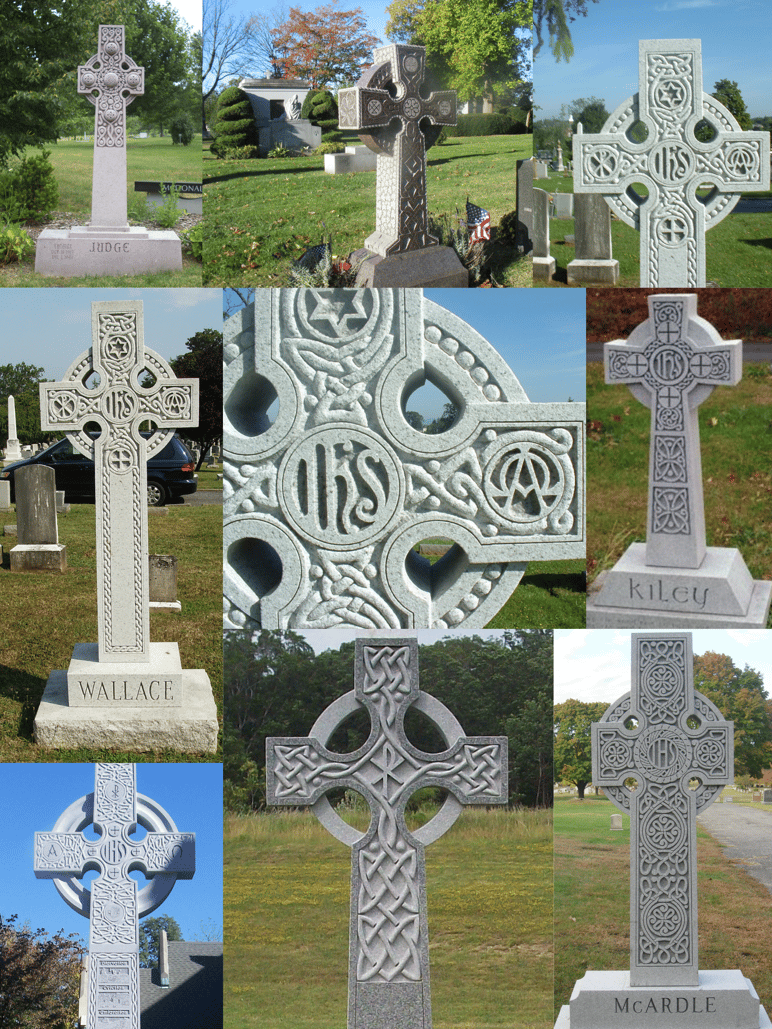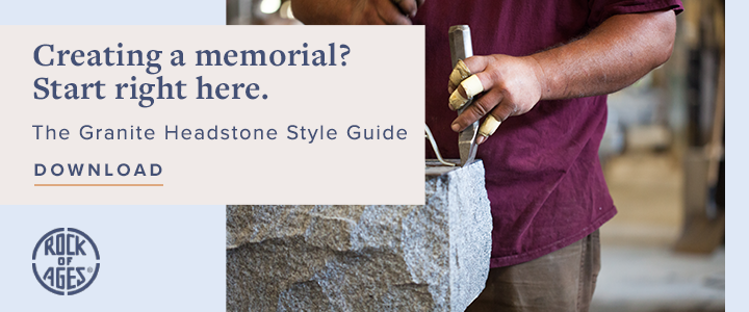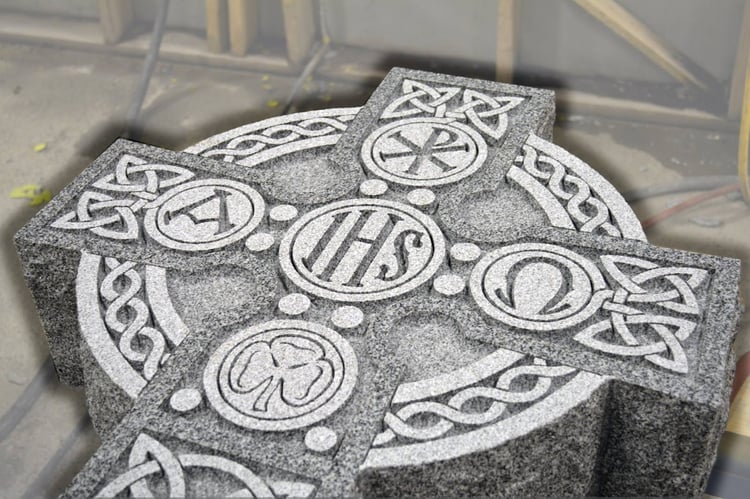
There will be plenty of Irish eyes smiling in the U.S. come St. Patrick’s Day. According to Census data, roughly 31.5 million Americans, or nearly 10 percent of the country, claims to have roots in the Emerald Isle.
The numbers are especially high in New England and the Northeast, where waves of immigrants escaped the Great Famine in the mid-1800s and flooded cities in search of a new start. Today, Irish culture is ubiquitous in states like New Hampshire (20.2 percent Irish ancestry), Massachusetts (19.8 percent), Rhode Island (17.6 percent), and Vermont (17 percent), the home of Rock of Ages.

Origins of the Design
The forerunner of the Celtic cross was the high cross, which first began appearing across the Irish landscape around the year 800. These stone structures were typically erected at overhead heights and featured the signature design element of what we now know as the Celtic cross: a circle surrounding the point where the two parts of the cross intersect.
The origins and purpose of the circle are a matter of historic debate and are steeped in folklore. Many believe the high cross represents a fusion of Christian and pagan iconography. However, there were so many religious influences in Ireland at the time that even this explanation has a fair share of variations.
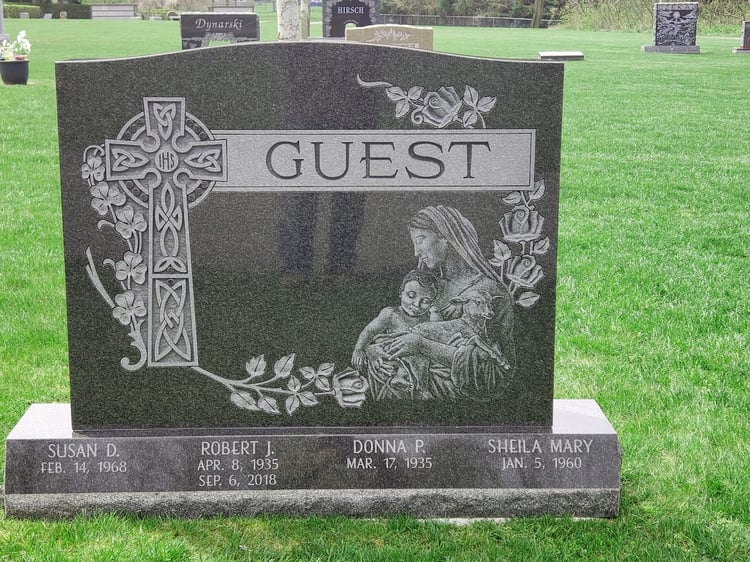
Some legends credit St. Patrick for combining the cross with a circle, representing the prominent pagan symbol of the sun, to emphasize God’s power. Others speculate it was influenced by the Roman sun god, the Viking deity Odin, or that the four sections of the circle were symbols of the seasons. Some see a simple engineering explanation for the circle: its wheel structure was meant to support the weight of the heavy stone arms of the cross.
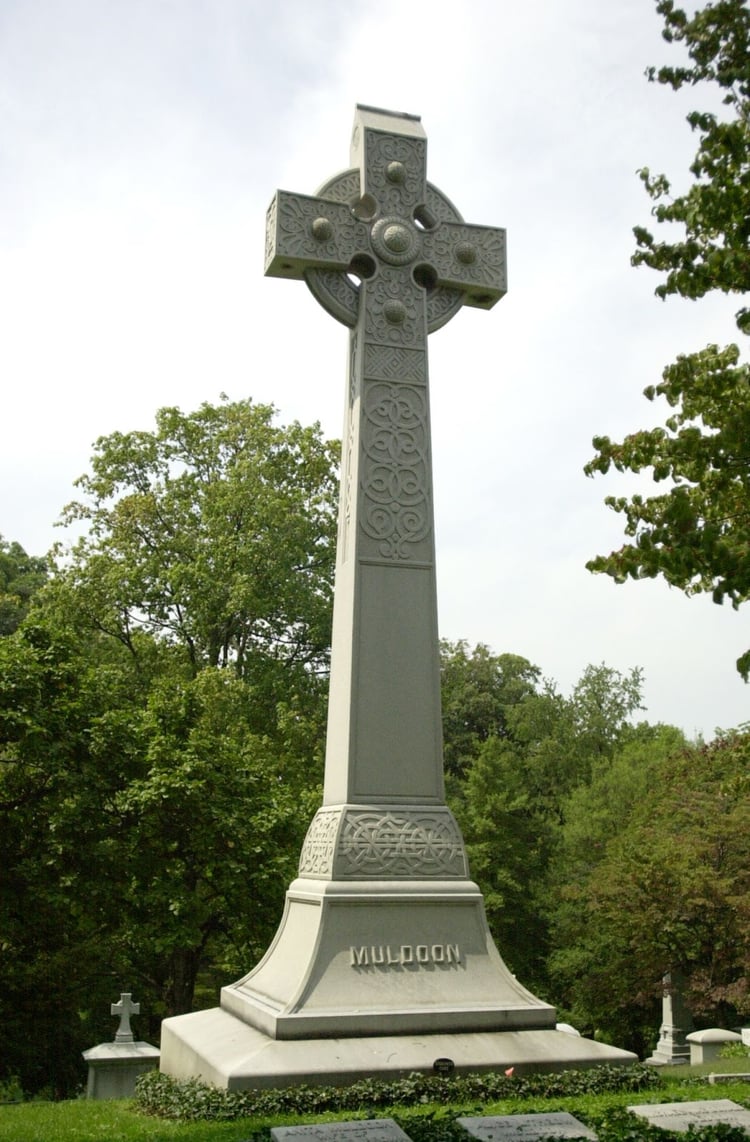
High crosses often featured detailed carvings of Biblical scenes like the crucifixion of Christ, Adam and Eve, and the last supper on both sides. Such visual interpretations would have certainly held value as educational tools in an age when few could read, although, once again, historians vary on the structures’ intended purpose. On one point there is no dispute: no version of the high cross was used as a headstone in the Middle Ages.
“Unlike the modern incarnations today, the original high crosses were never intended to mark places of burial,” according to the Irish government’s Heritage Ireland website. “Instead, they were used as boundary markers of significant territories or sacred land and as monuments to political power. Though they may have served a wide variety of functions, their main purpose was predominantly religious.”
By the year 1200, the trend of high cross construction had run its course in the Celtic world. About 250 original structures survive in Ireland today.
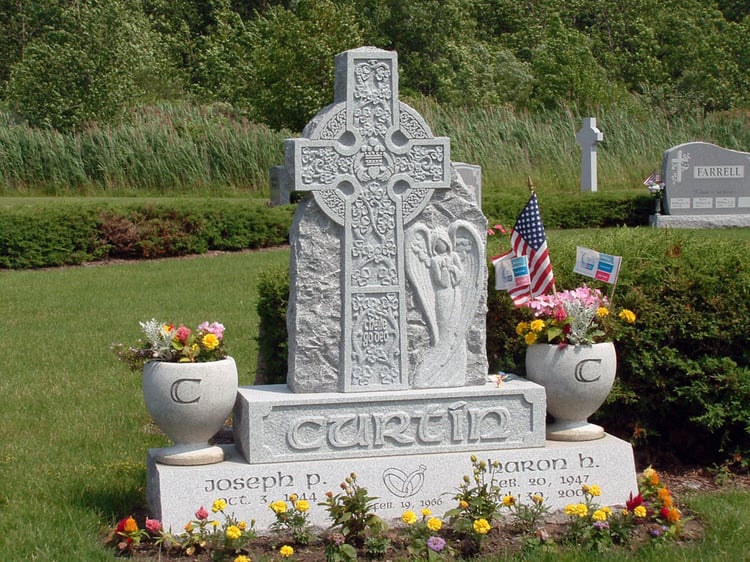
The Rise of the Celtic Cross
It wasn’t until the mid-1800s that the Celtic cross began appearing in burial grounds, first in Ireland and soon after abroad. The era marked the start of the Celtic Revival, a movement that celebrated the art, poetry, literature and culture of the Celts. In many respects, the Celtic Revival is as strong as ever today.
Stylistically, the headstones were similar to the high cross, with their circle and cross shapes. They are smaller than high crosses, though, and the themes of the carvings within the body are not typically as religious.
This reflects a pivot in purpose from serving as messaging tools designed by monks to statements of Irish pride and genealogy. They now more commonly feature familiar Irish icons like weave patterns (sometimes in the form of snakes in tribute to St. Patrick), clovers and Gaelic messages.
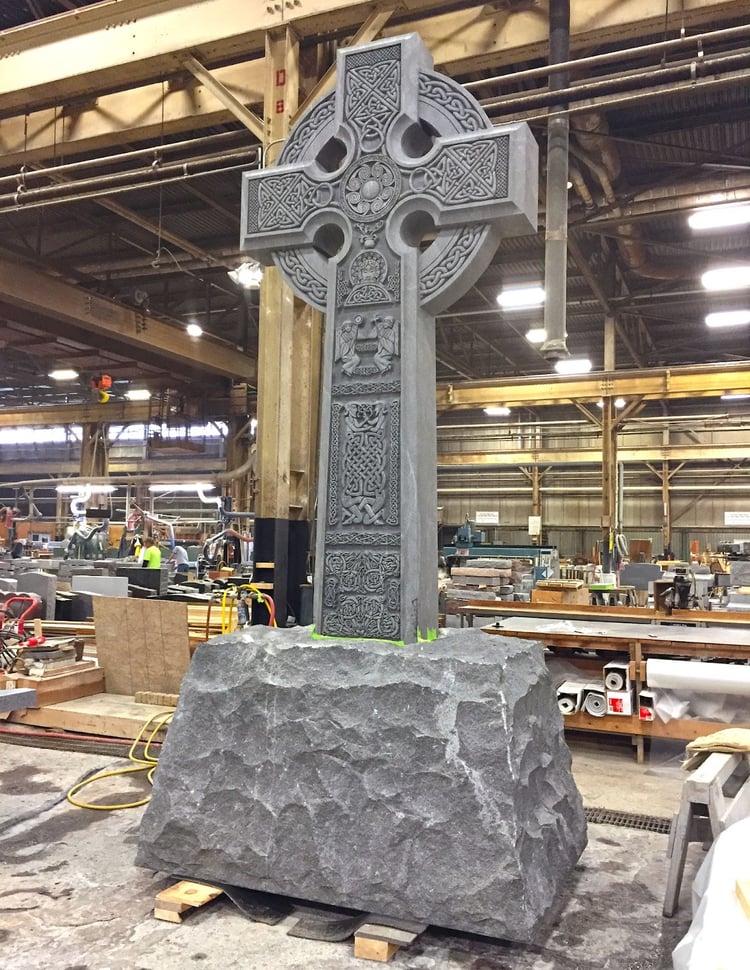
Rock of Ages has produced thousands of Celtic cross headstones across North America with extraordinary craftsmanship. Our stone artisans can work with you and your family to create a Celtic cross memorial with any unique combination of design elements, shapes, sizes, colors and materials needed to express your loved one’s story and heritage. There are also many options for incorporating Celtic cross artwork in standard headstone shapes.
Contact an Authorized Rock of Ages Dealer to learn about more possibilities for incorporating a celtic cross into your memorial design.
